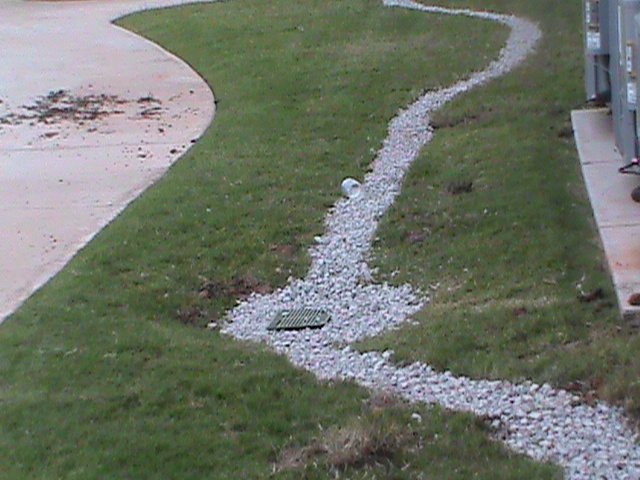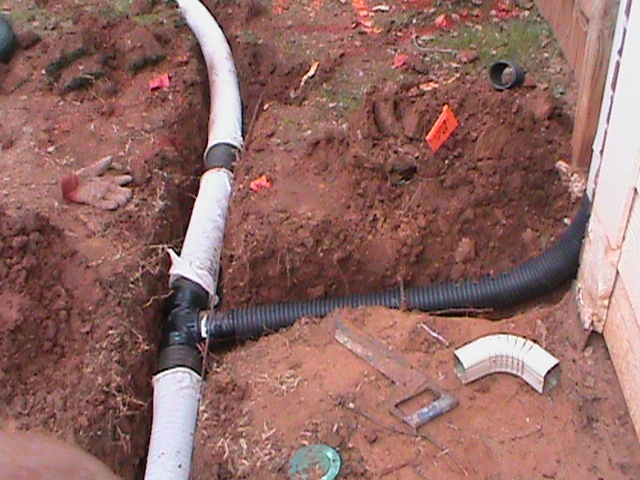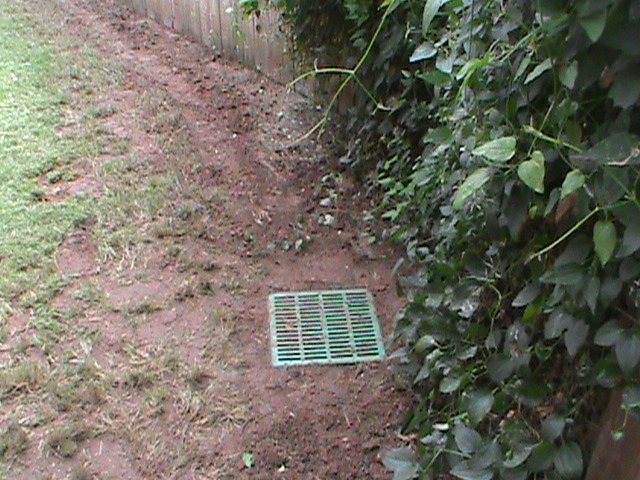French Drain Design must take into account many variables. One consideration for a French Drain that many times is missed, is the type of soil. French Drain Design must take into account the type of soil that the French Drain runs through. If the soil is "Tight or made up of Clay, A French Drain Liner may not be necessary. The Gravel or Limestone that is used to fill the French Drain trench may be all that is needed to maintain the integrity of the trench over time. This means that dirt will not mix in with the French Drain Gravel and clog it up over time. This is not the case however if your soil is sandy or loose. A Trench Liner should be used to prevent this type of soil from moving into the gravel of the French Drain. Trench Liners are relatively inexpensive and are not hard to install. If you are not sure what to do then install the Trench Liner in the French Drain.
Determining the size of the French Drain Pipe can be difficult. If the French Drain is not very big and has no Gutter Down-Spouts or Surface Drains connected to it then 3 inch or 4 inch French Drain Pipe may be used. If the French Drain is large or has many gutters or Surface Drains connected into it, then you should use 6 Inch French Drain Pipe or larger.
French Drain Design is also determined by the Problem Drainage Area. If water is moving into the Problem Drainage Area underground (Sub-Surface), then installing a French Drain is a "Must!" French Drains can move Sub-Surface water as well as Surface Water. Surface Drains can only move Surface Water. This is why French Drains do such a good job protecting driveways, sidewalks, and foundations.
CMG installs French Drains and Drainage Systems in all of Central Oklahoma including: Oklahoma City, Norman, Edmond, Moore, Mustang, Yukon, and Midwest City.




No comments:
Post a Comment